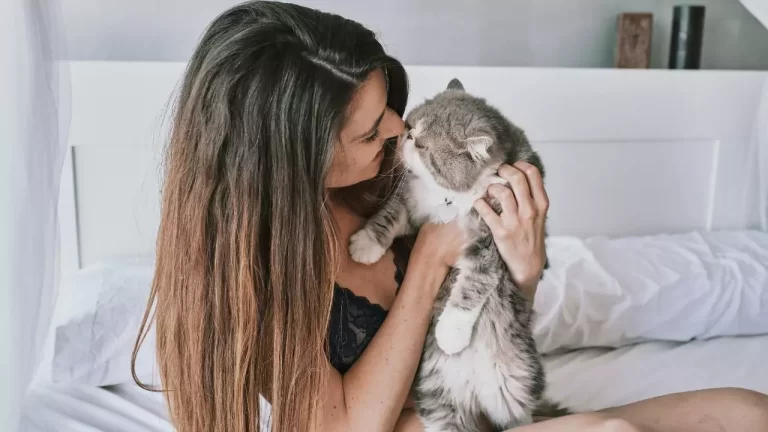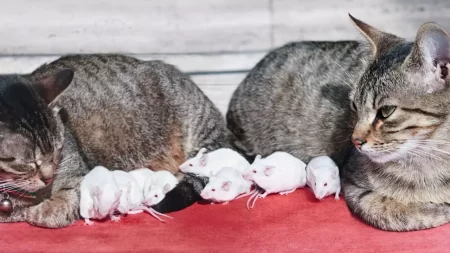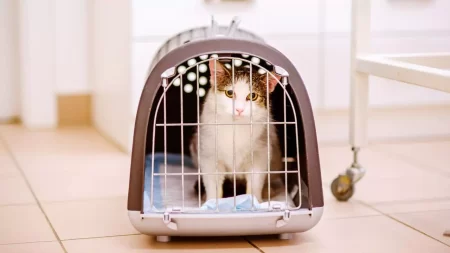Cats can be independent pets, but they still need love and affection from their human companions.
There are many ways to strengthen the bond with your cat and let them know they are cared for. Understanding feline behavior and communication is key, as is providing for their basic needs.
With quality time, patience, and the right approach, you can build a loving relationship with your cat.
Ways to Show Your Cat Love
Slow blink in their Direction
When a cat slowly blinks at you, it’s showing affection and contentment. Return the gesture by focusing your eyes on your cat, then slowly blinking and reopening your eyes. This “cat kiss” mimics their natural facial expressions and helps create a trusting connection.
Engage in Grooming Sessions
Set aside time for daily brushing and combing, which removes loose hair and allows bonding time. Pay extra attention to areas your cat can’t easily reach, like behind the ears. Your cat will appreciate the pampering while you get quality one-on-one time.
Provide Playtime and interactive toys
Schedule at least two play sessions per day to satisfy your cat’s natural hunting instincts. Drag toys on strings, throw balls, and use laser pointers to stimulate their interest and let out pent-up energy. Vary the types of toys to prevent boredom. Make sure to let them “catch” their prey at the end!
Create a comfortable environment with cozy beds and hiding spots
Cats love snoozing in soft beds and cardboard boxes, as well as finding refuge in cubby holes. Place comfy beds around your home and allow access to closets, boxes and similar hideaways. Adding a couch or cat tree by a window gives them a perfect perch to survey their domain.
Give affectionate touch and cuddle time
While cats may seem aloof at times, most enjoy and solicit petting and cuddling on their terms. Learn when your cat is receptive to being held or sitting in your lap. Stroke them gently around the cheeks, chin, and ears. Avoid overstimulating areas like the belly and tail. Let them dictate the affection agenda.
Understanding Cat Communication
Recognizing cues of trust and affection
Cats display contentment through actions like kneading, purring, and grooming you. A slow blink or exposing their belly indicates deep trust and comfort. Learn your cat’s subtle cues. For instance, a straight-up tail with a curved tip means a happy greeting when you come home!
Responding appropriately to your cat’s body language
Cats rely on nonverbal signals. For example, a swishing tail often means irritation. Ears pressed back can signal annoyance or fear. React calmly rather than escalating the situation if your cat seems distressed. Pay attention to their “no” signals like swatting or nipping to avoid miscommunications.
Meeting Their Needs
Providing nutritious meals and treats
Your cat’s diet should include wet and dry food with enough protein, fat and nutrients. Avoid fillers like corn and wheat. Feed them twice daily and leave dry food available for snacking if needed. Healthy treats in moderation are fine too. Provide fresh water replenished multiple times per day.
Keeping their litter box clean
Scoop waste from litter boxes daily, and change the litter every 1-2 weeks. Cats dislike dirty boxes and may start having “accidents” around your home if their needs aren’t met. Provide one more box than you have cats, and place them in low-traffic spots for privacy. Your cat will be happier and healthier with a tidy toilet area.
Regular veterinary care and vaccinations
Take your cat to the vet annually and keep them up to date on vaccines and preventative care. Early screening for conditions like dental disease, kidney issues, and diabetes can prevent bigger problems. You want to keep your cat healthy and minimize stressful vet trips by being proactive. Your cat will thank you!
Building a Bond with Your Cat
Spending quality time together
Set aside periods throughout the day to engage with your cat one-on-one. Play with interactive toys together or break out the laser pointer for them to chase. Offer gentle pets while they sit in your lap. Doing calming activities together every day strengthens your bond.
Learning their preferences and habits
Pay attention to your cat’s unique personality traits. What types of toys and treats do they prefer? When are they most active? Where do they like to nap? Understanding these quirks will help you become more attuned to their needs. Develop routines that respect their preferences.
Respecting their boundaries and individuality
While you may want to smother your cat in affection, realize they have limits. Don’t force interactions if your cat seems uncomfortable. Let them approach you first when they want attention. As prey animals, cats value their space. Patience is key in gaining a cat’s trust and devotion.
Adopting a positive reinforcement training approach
Use praise and treats to encourage behaviors you want to promote, like using a scratching post instead of furniture. Avoid scolding or yelling at your cat. This erodes trust. Set your cat up for success by directing unwanted scratching to appropriate surfaces. Reward them for making the right choice. Positive reinforcement works best!







